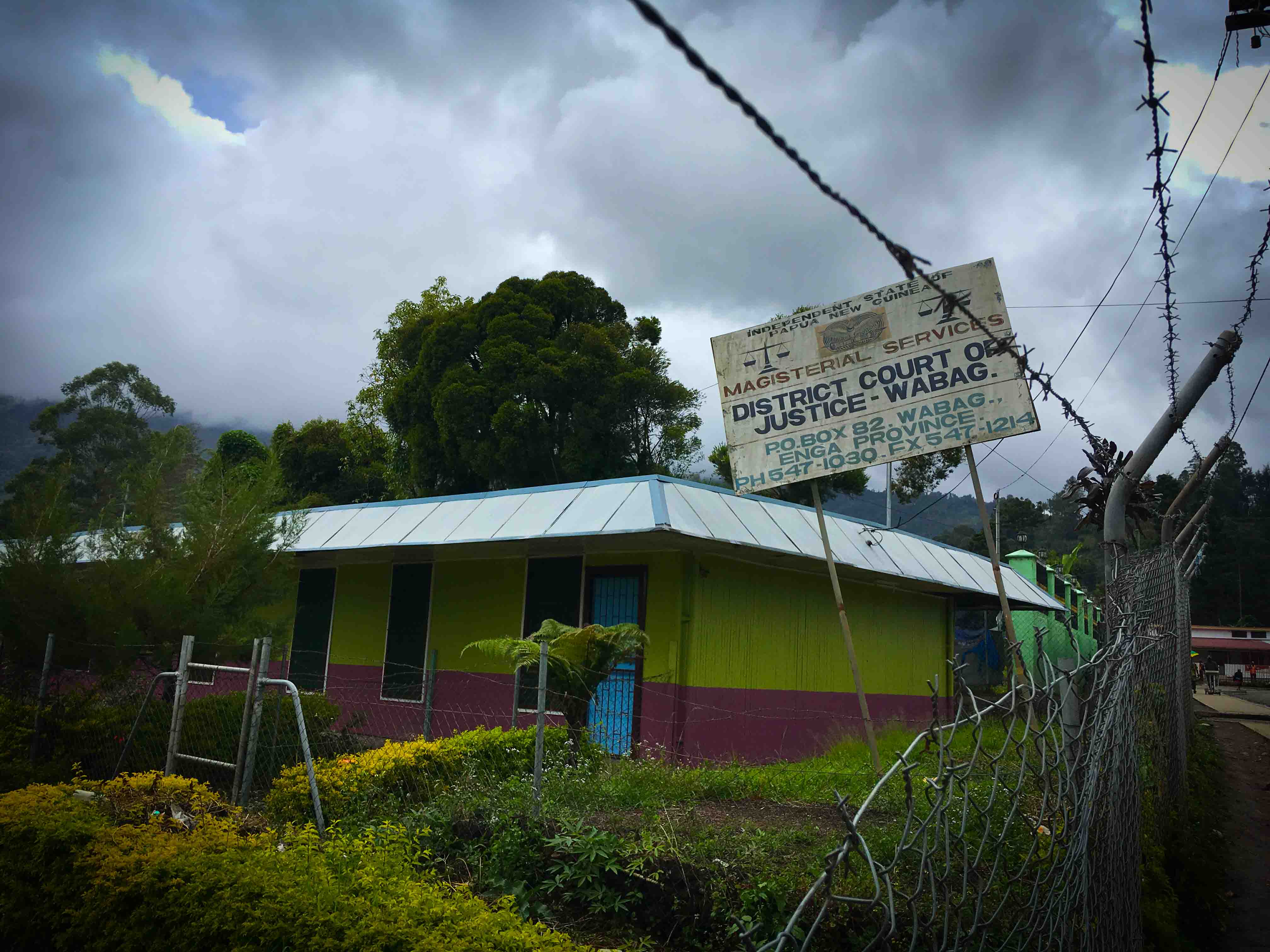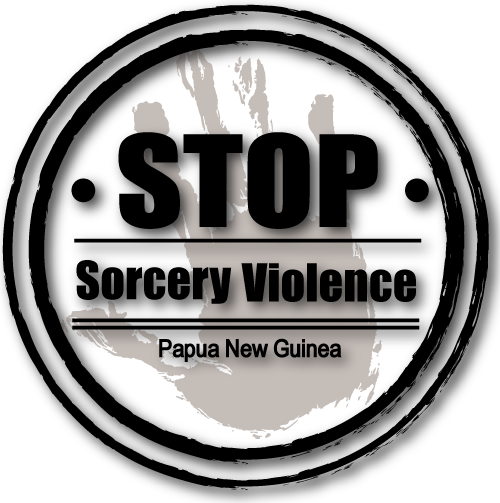A visit to Wabag, Enga: an Outsider’s Perspective

Sanguma, a specific form of witchcraft belief, is widely viewed as spreading to Enga in the past eight years or so. What may be the appropriate response is contested, and to support a particular approach, Enga often refer to the knowledge of those who have travelled or lived in other parts of the Highlands where sanguma is believed to be common and to have deep roots. In some instances, the response can be quick and lethal.
The analysis of national newspaper and court reports over a 20 year period indicated there were very few incidents of sorcery accusation related violence (SARV) reported in Enga (Forsyth et al. 2017). However, data collected in Enga in 2017 as part of a national SARV research project indicates there are more incidents now, many of them not covered in the media, with the majority accused being female.
A recent visit to Wabag, the capital of Enga province in the highlands of Papua New Guinea, highlighted how difficult it is to address crime and violence, even really serious crime like torture and killing, in a volatile and poorly resourced place.
Due to tribal fighting, in the week I was there, the provincial government offices were closed, the District Court closed on the second day, and armed mobile police and defence personnel were milling around the police headquarters. The fighting was close by, a few kilometres out of the town centre, with the occasional sound of gunshot and plumes of smoke billowing from the nearby valley. At least six people were reported to have died during the week, yet the fighting was not considered as dire as that which erupted during and after the 2017 national elections.
The District Court was broken into and wrecked twice in the past year, and they were hoping for new computers soon. Senior police said they currently had some fuel for cars and due to the largesse of a local member of parliament, this time they had enough funds to feed and house the visiting police and soldiers. These senior police were working very closely with an Operation Mekim Save (OMS) village court magistrate, a respected local leader who was endeavouring to mediate between the two warring tribes.
During the same week, two women were accused in a Wabag marketplace of practicing sorcery. What saved them from further harm was the intervention of an American missionary, who lives with his family in the area, and an auxillary (unpaid) police officer. After the women were taken to shelter in the home of the missionary, a senior police officer visited the village of the accusers and warned them of the consequences of any further persecution.
He, and other senior detectives, acknowledged they are less likely to respond, if at all, to reports of SARV in other parts of the province. In the same week, four women accused of sorcery were burnt alive in a remote village near the Western Highlands border, and police in Wabag were not aware of the incident. Tribesmen of one of victims had visited the remote village but having obtained compensation of pigs and money, had left again without causing further trouble.
The senior police were proud of the fact that the police had earlier this year arrested and charged a glasman (a diviner), who had been involved in naming those who were purported to be involved in witchcraft, and who currently sits on remand in a prison near Hagen.
So, some action is being taken, but it is intermittent and ad hoc, as crime and justice agencies are rendered largely impotent and/or have to channel meagre and precious resources on the widespread threat and outbreaks of tribal fighting and its consequences.
Although beliefs and practices related to magic and sorcery have a long history in Enga, the virulent and toxic form sanguma is new and poses considerable challenges for local and more traditionally informed methods to deal with the fear of sanguma and responses to its perceived use.
The scholars Pupu and Weissner (2018) cite OMS chairmen who refer to multiple and wide-ranging social changes, and argue for specially trained panels to deal with cases that have no precedents in custom and have no evidence on which to base decisions, such as SARV cases. An OMS chairman told me that his decision to order compensation in his first SARV case last year, to the survivor and her family, was based on the fact that there was no evidence of sanguma, ‘our forefathers never believed in sanguma… and violence against women is against our customary ways’.
 A woman who survived torture in March showed me the burn marks on her back. She is determined to pursue her torturers, and to hold them accountable for their actions. She did report what happened to the police, but they argue it is impossible to find the alleged perpetrators in the current environment. She now said she preferred to go to the OMS, as the matter will be dealt with more expeditiously than the court and should produce more meaningful outcomes, including compensation. At the time of the visit, the alleged perpetrators had not appeared before the OMS so the warrant officer was tasked with finding them.
A woman who survived torture in March showed me the burn marks on her back. She is determined to pursue her torturers, and to hold them accountable for their actions. She did report what happened to the police, but they argue it is impossible to find the alleged perpetrators in the current environment. She now said she preferred to go to the OMS, as the matter will be dealt with more expeditiously than the court and should produce more meaningful outcomes, including compensation. At the time of the visit, the alleged perpetrators had not appeared before the OMS so the warrant officer was tasked with finding them.
The Catholic Church had supported this woman and another victim I interviewed. They’d helped her with food and a little money. The Church has also been running ecumenical meetings and workshops in the province, to mobilise and strengthen opposition and resistance to sanguma beliefs and the horrific action that can ensue. I was told several local committees had been established, involving mainly village court magistrates and other local leaders. But what little funding had been available has run out and it is uncertain whether such work will continue. The Church was also trying to secure funding for a child protection program, and this could take priority. So much to do, and so few resources.
Other churches and organisations may be involved in helping the victims of SARV on a case by case basis, but it is unlikely to be as concerted an effort as what the Catholic Church has been doing. There wasn’t much evidence of non-government organisations in Wabag. I was told Tribal Foundation had helped with funding for anti-SARV initiatives, and a trickle of international aid flows into the health sector. The chronically under-resourced government services were either focused on or suspended because of, the fighting. A critical question is how to capitalise on existing goodwill and the services that actually exist, to prevent and intervene in SARV when tribal fighting is in abeyance?
References
Pupu N and Wiessner P 2018 ‘The challenges of village courts and Operation Mekim Save among the Enga of Papua New Guinea today: a view from the inside’ Discussion paper 2018/1, Department of Pacific Affairs, Australian National University. http://dpa.bellschool.anu.edu.au/experts-publications/publications/6233/dp-201801-challenges-village-courts-and-operation-mekim-save
Forsyth M, Putt J, Bouhours T and Bouhours B 2017 ‘Sorcery accusation–related violence in Papua New Guinea Part 4: Trends over time and geographic spread’, In Brief 2017/31, Department of Pacific Affairs, Australian National University. http://dpa.bellschool.anu.edu.au/experts-publications/publications/5815/ib201731-sorcery-accusation-related-violence-papua-new-guinea


